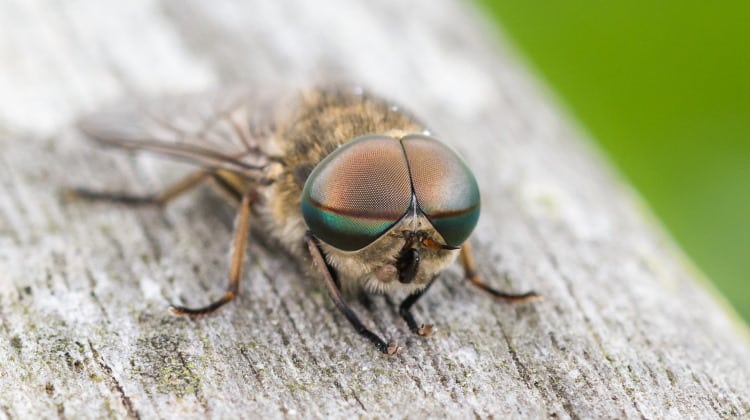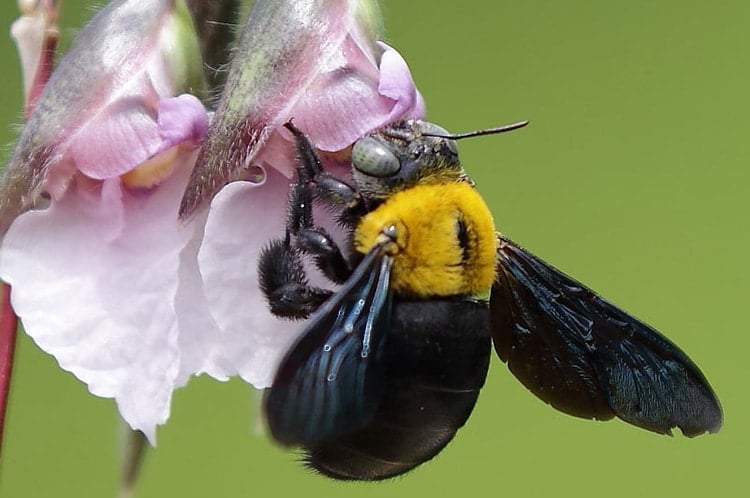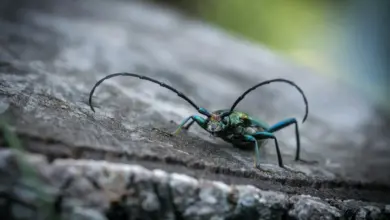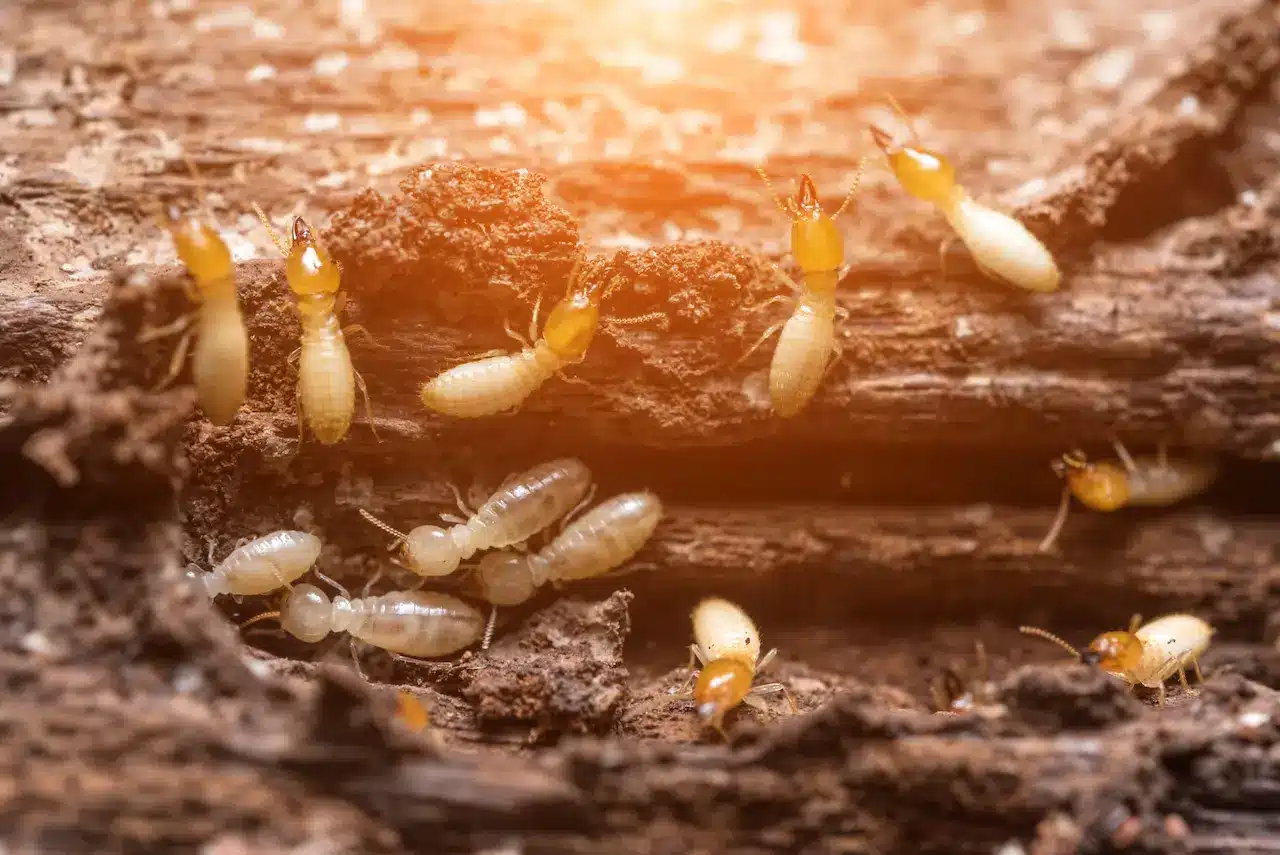Ever wondered what is insect pupation? In the natural world it’s all about survival, but in some cases setting up to thrive means taking big risks. For insects, the pupation stage is often when insects are at their most vulnerable; immobile and defenseless, however, the transition between larval and adult forms is a vital stage in their life cycle that secures each species a place in the food chain.
Insect pupation is the process where an insect undergoes significant internal and external transformations. The pupal stage occurs after the insect has completed its larval stages, where it has typically focused on growth and consumption. As a caterpillar forms a chrysalis or a maggot retreats into a puparium, it signifies the commencement of this transformative phase.
Because of the vulnerabilities faced in this form, the choice of pupation site and timing are crucial for survival.
Metamorphosis is a broader biological process that encompasses pupation. This phase is crucial as it allows the insect to reorganize its body structures, developing from a larval form that is often vastly different in appearance and function from the adult it will become. The changes that take place during this stage are profound – muscles, organs, and even body tissue are broken down and reformed.
Pupation can vary greatly between species, both in duration and in the nature of the physical changes that occur.
Understanding the mechanisms and outcomes of pupation provides insights into the survival strategies of insects. By transitioning to a completely different body form, insects can exploit new habitats and resources, avoiding competition with their larval-stage counterparts.
It’s a fascinating process that deserves attention and study…

Understanding Pupation
Pupation is a crucial phase in the life cycle of insects undergoing complete metamorphosis. It is a transitional stage from larva to adult, where significant developmental changes occur.
Pupation and Metamorphosis
During pupation, the insect larva transforms within the pupa (a protective casing), to emerge as an imago, or adult insect. This process is part of complete metamorphosis, which includes four life stages
- Egg
- Larva
- Pupa
- Adult
Larvae cease feeding and often move to a suitable location to pupate. Once enclosed in the pupal case, the larva reorganizes its structure through cell growth and differentiation, leading to the formation of the adult insect. The length of the pupal stage varies among species and can be influenced by environmental factors.

The Role of Hormones in Pupation
Hormones are needed to regulate the development and progression of life stages as the insect transforms, i.e. from larva (caterpillar) to adult (butterfly or moth). This process is heavily regulated by hormones, primarily juvenile hormone (JH) and ecdysone.
- Juvenile Hormone (JH): This hormone plays a critical role in maintaining the larval state. High levels of JH prevent the initiation of pupation. As the larva reaches the end of its growth phase, JH levels decrease, which is a signal that it is time to begin the transition to the pupal stage.
- Ecdysone: Often referred to as the moulting hormone, ecdysone triggers the shedding of the larval skin to allow for growth or metamorphosis. As JH levels drop, ecdysone levels rise, initiating the process of pupation. Ecdysone promotes the development of pupal characteristics and eventually the emergence of adult features.
This hormonal balance provides the timing mechanism that coordinates metamorphosis, ensuring the transition to the adult form is successful.
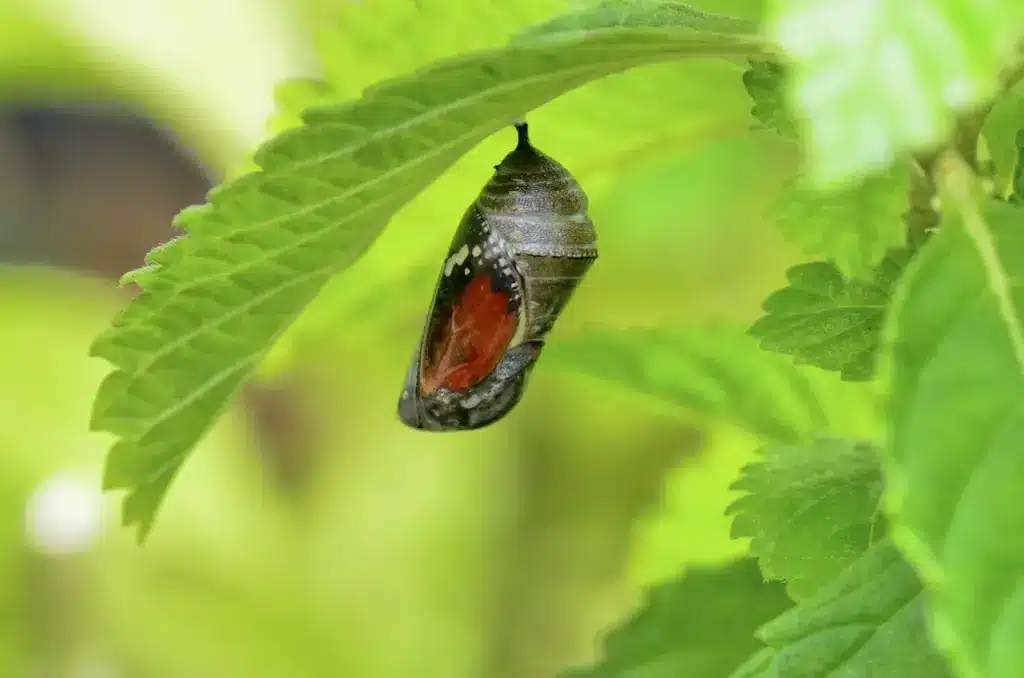
Types of Pupae
There are several types of pupae in the insect world, distinguished mainly by their degree of mobility and the presence or absence of a protective covering. These variations reflect adaptations to different environmental conditions and survival strategies. Here are the three primary types of pupae found in insects:
- Obtect Pupae: Common in butterflies, moths, and some other groups of insects, these pupae are characterized by having their appendages (like legs and wings) closely appressed to the body and fused by a hard chitinous covering. Their chrysalides provide significant protection and can often be seen dangling from twigs, enveloped in a protective layer of silk. The pupae are typically immobile and often have a smooth, compact appearance. The cocoon around a moth pupa or butterfly chrysalis is created from silk produced by the caterpillar before pupation.
- Exarate Pupae: Found in many beetles, flies, and wasps, exarate pupae have their appendages free and not glued to the body. This allows for some movement, which may help with repositioning or breaking out of the pupal case when the insect is fully formed. Fly pupae, for instance, show more mobility compared to the obtect pupae of butterflies and moths. The lack of a hardened protective layer makes them somewhat more vulnerable than obtect pupae.
- Coarctate Pupae: A specialized type of exarate pupae, coarctate pupae are found in certain flies, like houseflies. These pupae are formed inside a hardened case called a puparium, which is actually the hardened last larval skin that provides an additional layer of protection during its development phase. The pupa itself inside is free-moving, but the protective puparium shields it from environmental hazards and predators.
Each type of pupae represents a different strategy for surviving the vulnerable pupal stage, balancing the need for protection with the necessity for mobility to ensure proper emergence as an adult.
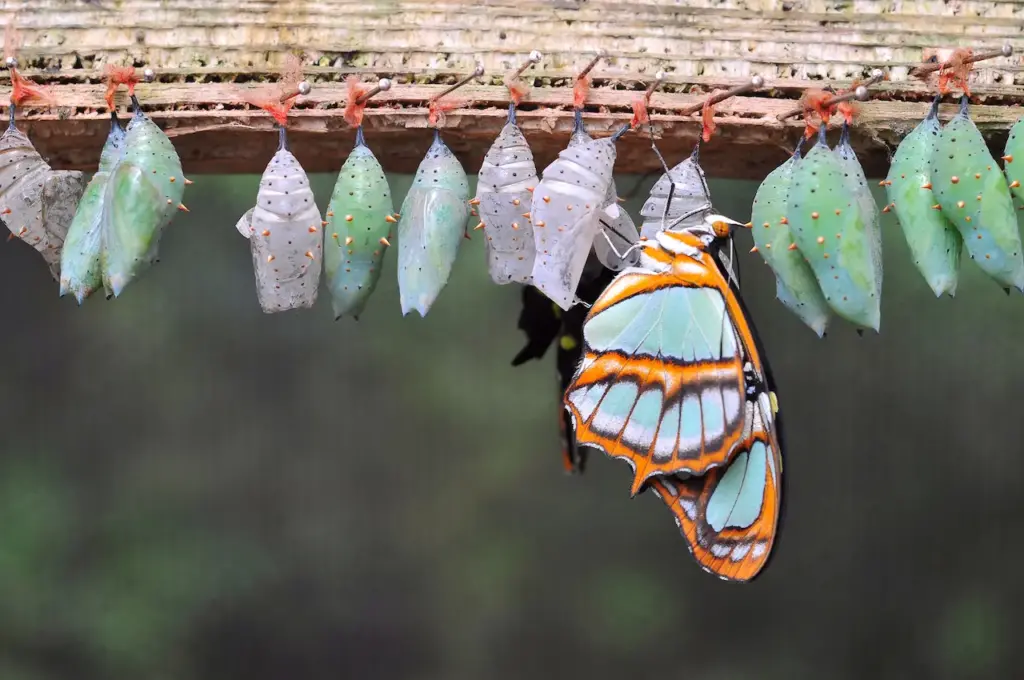
Pupation Habitats and Behaviours
Insects during pupation employ various defenses and adapt to their surroundings to successfully transition to adulthood. They select environments and display behaviors that significantly reduce the risks of predation and environmental dangers.
Defensive Strategies During Pupation
Insects are vulnerable during pupation which is why they exhibit an array of defensive strategies to protect against predators and parasitoids. Some species construct nests or burrows that act as physical barriers. Social hymenopterans, such as ants, bees, and wasps, may pupate within highly guarded nests, ensuring a high survival rate.
Chemical defenses are also common, with many species secreting substances that repel or harm potential predators.
Diapause is a behavioural adaptation that allows pupae to enter a state of dormancy, suspending development in response to unfavorable conditions, rendering them less noticeable to predators due to their inactivity.
Environmental Factors Affecting Pupation
The success of pupation is deeply influenced by environmental factors, such as temperature. Pupation often requires specific temperature ranges to trigger the process or to sustain it through completion. Soil and twigs provide physical support and can also offer thermal stability, moisture control, and camouflage.
Vibrations and sounds play a key role as well, with some insects able to detect the approach of predators through sensitive receptors, prompting them to remain still or to enact other defenses. Pupation sites are selected with consideration for these environmental aspects to improve survival odds.
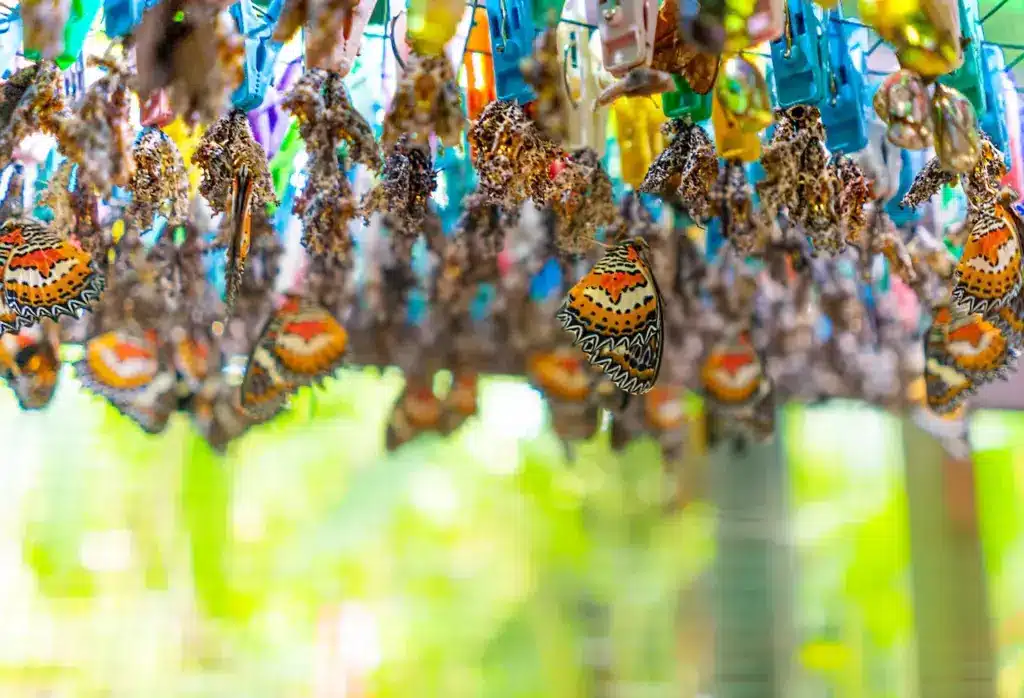
From Pupa to Adult
There is still a lot going on as the pupa moves to adult. To be ready to survive and reproduce in their environment there needs to be calculated changes with precise timing before the adult can emerge.
The Process of Eclosion
Eclosion is the final stage of development as the insect emerges from the pupa. Hormones trigger the process, where the mature insect releases enzymes to soften the pupal case. They then use specialized movements to break free, a process that is critical for insects like the monarch butterfly. The emergence is strategic, and timed for optimal conditions to aid in the insect’s survival. As the adult emerges, it’s often soft and vulnerable, requiring time for its exoskeleton and wings to harden.
Adaptation for Survival
After eclosion, the adult insect undergoes critical changes. In some species, like lycaenid butterflies, the adult must feed to gain energy for survival while their body undergoes rapid change.
Wings are especially vital adult structures that need to be pumped with fluids to expand and harden for flight. This rapid period of change is governed by hormones that control the hardening of the exoskeleton through a process known as moulting. Adult insects are attuned to their environment, showing adaptations for feeding, avoiding predators, and finding mates.
Conclusion
Understanding insect pupation is not just about observing a fascinating natural phenomenon; it’s crucial for broader ecological, agricultural, and biological research. Pupation is a pivotal phase in the life cycle of insects, where they undergo dramatic transformations from larvae to adults. This stage is essential for maintaining the balance of ecosystems, as insects play numerous roles—from pollinators aiding in plant reproduction to being a key part of the food web.
Studying insect pupation can lead to advancements in pest control strategies, helping to protect crops and reduce reliance on chemical pesticides. Insights gained from the mechanisms of insect pupation can also inspire biomimetic designs in technology and materials science. Delving into the complexities of pupation enhances our understanding of insect biology as well as bringing to light applications that can benefit agriculture, conservation, and industry.


